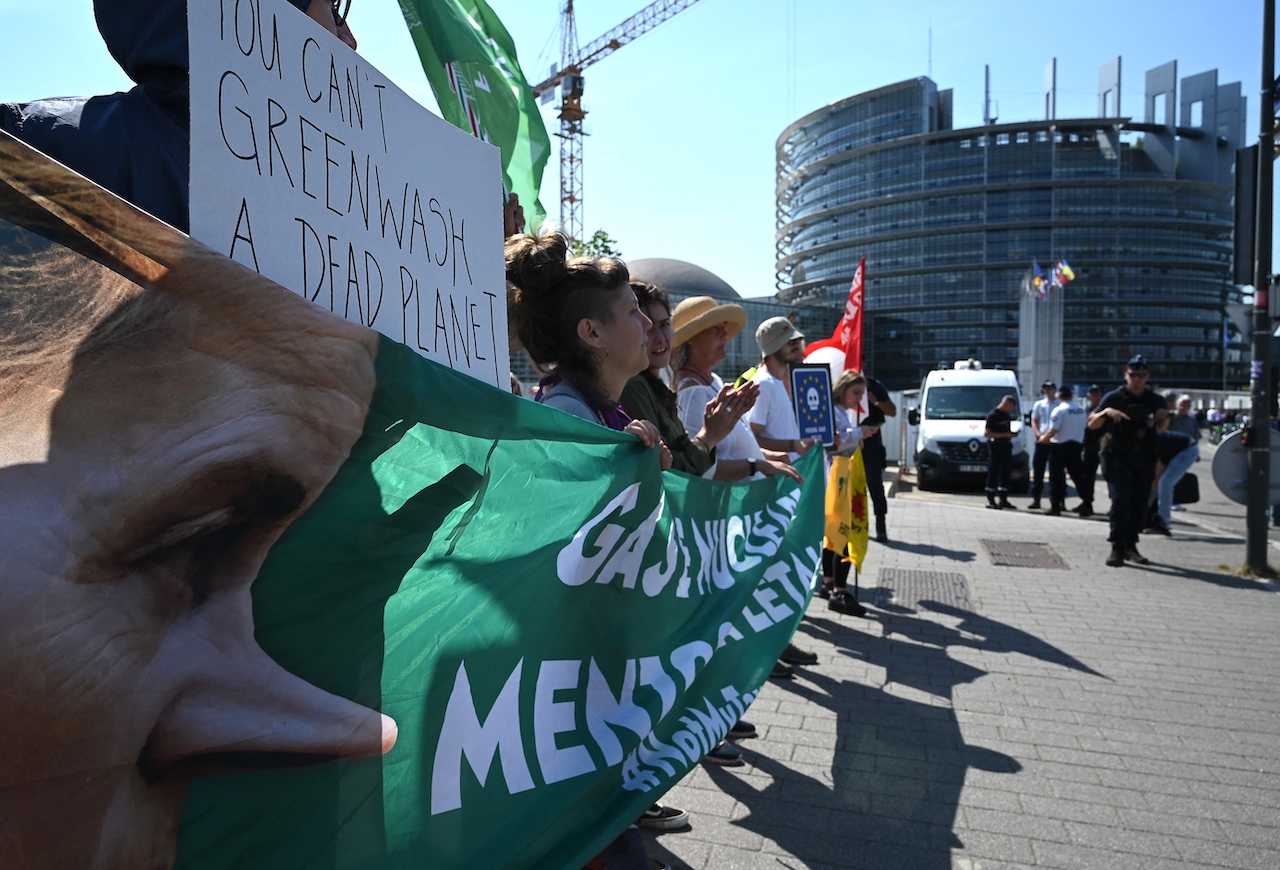This week, the European Parliament gave nuclear energy and gas a green label. Both energy sources are now included in the European taxonomy for sustainable investments

In brief
- On Wednesday, the European Parliament gave nuclear energy and gas a green label.
- Both energy sources are now included in the European taxonomy for sustainable investments.
- Luxembourg and Austria threaten a lawsuit at the European Court of Justice against the inclusion of nuclear energy in the taxonomy.
- Denmark and Germany are also reportedly considering this.
Gas and nuclear energy have been given a green stamp in the European taxonomy. This is a classification system that should immediately make it clear to investors which investments the European Union considers sustainable. The European Parliament was unable to gather enough votes on Wednesday to keep gas and nuclear energy out of the taxonomy.
Beforehand, opponents of the inclusion of gas and nuclear energy, including GroenLinks MEP Bas Eickhout and PvdA MP Paul Tang, doubted whether they would receive sufficient support. The European Parliament could only block the European Commission’s proposal on the two energy sources, made in December, if an ‘absolute majority’ of 353 out of the total 705 MEPs expressed their disapproval.
Preventing greenwashing
Even COVID-19 played a role in Wednesday’s vote. Until recently, MEPs did not necessarily have to travel to Strasbourg or Brussels because of the coronavirus crisis, but they were also allowed to vote digitally.
That option is now a thing of the past, despite the fact that coronavirus infections increasing significantly and a number of MEPs are in quarantine. In the end, 328 parliamentarians voted in favour of the inclusion of gas and nuclear energy, 278 against, and 33 abstained.
The European Union decided in 2020 to introduce a taxonomy which should give investors certainty about what serious ‘green’ investments are. The aim is to prevent greenwashing — i.e. investing in projects that sound sustainable, but are not. The taxonomy came into effect at the beginning of this year, when gas and nuclear energy were still excluded
Nuclear disasters and waste
The discussion about the two energy sources has been so heated that the European Commission kept putting a decision on hold. Until the end of this year, when Germany and France reached a mutual agreement.
In Berlin, nuclear power has a bad reputation after the Chernobyl and Fukushima disasters, but it promised to support France, which runs largely on nuclear power. Nuclear energy emits hardly any greenhouse gases, but there is no permanent solution for nuclear waste.
In exchange for support, Germany received the green stamp for gas, on which the country was still very dependent at the time. Since Russia’s invasion of Ukraine in February, the Germans have also been scaling down their share of Russian gas. However, gas is considered a cleaner alternative than the coal-fired power stations that are still frequently found in Germany and Eastern Europe. It is therefore seen as a ‘transition fuel’ on the way towards a cleaner energy supply.
Capturing heat and CO₂
In its proposal, the European Commission grants gas and nuclear energy the green label of the taxonomy, but temporarily and subject to conditions. For example, investments in new nuclear power plants are considered green if the latest technologies are used, the permit is issued by 2045 at the latest, and there is a plan about what to do with the nuclear waste. Investments in gas-fired power stations will be green until 2030, provided they emit less than 270 grams of CO₂ per kilowatt-hour and start using cleaner gas every five years.
According to Eickhout of GroenLinks, the Commission has been ‘light’ on its criteria because, for example, an earlier elaboration of the taxonomy law states that something can only be sustainable if less than 100 grams of CO₂ is released per kilowatt-hour. Only the newest gas-fired power stations can manage that, and only if the CO₂ is captured or the heat released in the process is reused.
Political instrument
Tang of the PvdA says that “all kinds of things and emotions are intertwined”. During a debate on Tuesday, many MEPs expressed their concerns about “energy security and high gas prices”, while according to the PvdA member the taxonomy has nothing to do with this. Excluding gas and nuclear energy does not mean that investors will no longer be allowed to invest in them in the future. It simply means that they are not green, like windmills, which are immediately included in the taxonomy. Tang is disappointed that the classification system has now become a “political instead of a scientific tool”. “This leads to chaos”.
Luxembourg and Austria have already said they will go to the European Court of Justice to keep “dangerous” nuclear energy out of the taxonomy. According to Eickhout, Denmark is also considering this. In addition, part of the European Parliament is also interested in legal action, if a majority is obtained.
“We wanted to give investors certainty, but they will not get it for the time being,” laments Eickhout, who expects investors to ignore this taxonomy. “There are no green bonds with gas and nuclear energy anywhere in the world.” But CDA member Tom Berendsen objects that “we do not have the luxury of excluding technologies if we want to achieve our climate goals”.
This article originally appeared in FD, the Dutch business daily, on 6 July 2022






